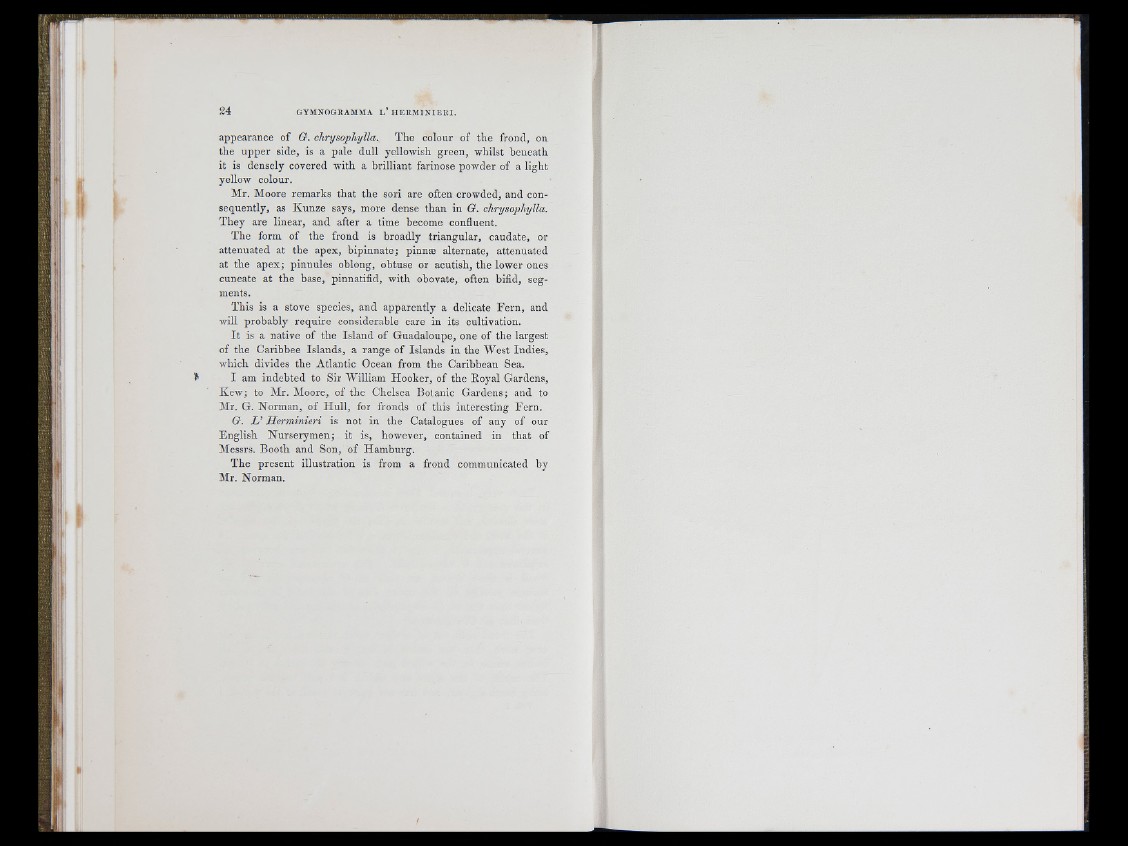
appearance of G. chrysophylla. The colour of th e frond, on
the u p p e r side, is a pale dull yellorrish g reen, whilst beneath
it is densely covered with a brilliant farinose powder of a light
yellow colour.
Mr. Moore remarks th a t the sori are often crowded, and consequently,
as K u n z e says, more dense than in G. chrysophylla.
They are linear, and after a time become confluent.
The form of th e frond is broadly trian g u la r, caudate, or
attenuated at the apex, h ip in n a te ; pinnae alternate, attenuated
at the apex; pinnules oblong, obtuse or acutish, th e lower ones
cuneate at the base, pinnatifid, with obovate, often bifid, segments.
This is a stove species, and apparently a delicate F e rn , and
will probably req u ire considerable care in its cultivation.
I t is a native of the Islan d of Guadaloupe, one of the largest
of the Caribbee Islands, a range o f Islands in the W e s t Indies,
Avhich divides the Atlantic Ocean from the Caribbean Sea.
I am in d eb ted to Sir William Ho o k e r, of th e Royal Gardens,
K ew ; to Mr. Moore, of the Chelsea Botanic G a rd en s; and to
Mr. G. Norman, of H u ll, for fronds of this interesting Fern .
G. i ’ He rmin ie ri is not in th e Catalogues of any of our
E n g lish N u rse rym en ; it is, however, contained in th a t of
Messrs. Booth and Son, o f Hamburg.
The p resent illustration is from a frond communicated by
Mr. Norman.